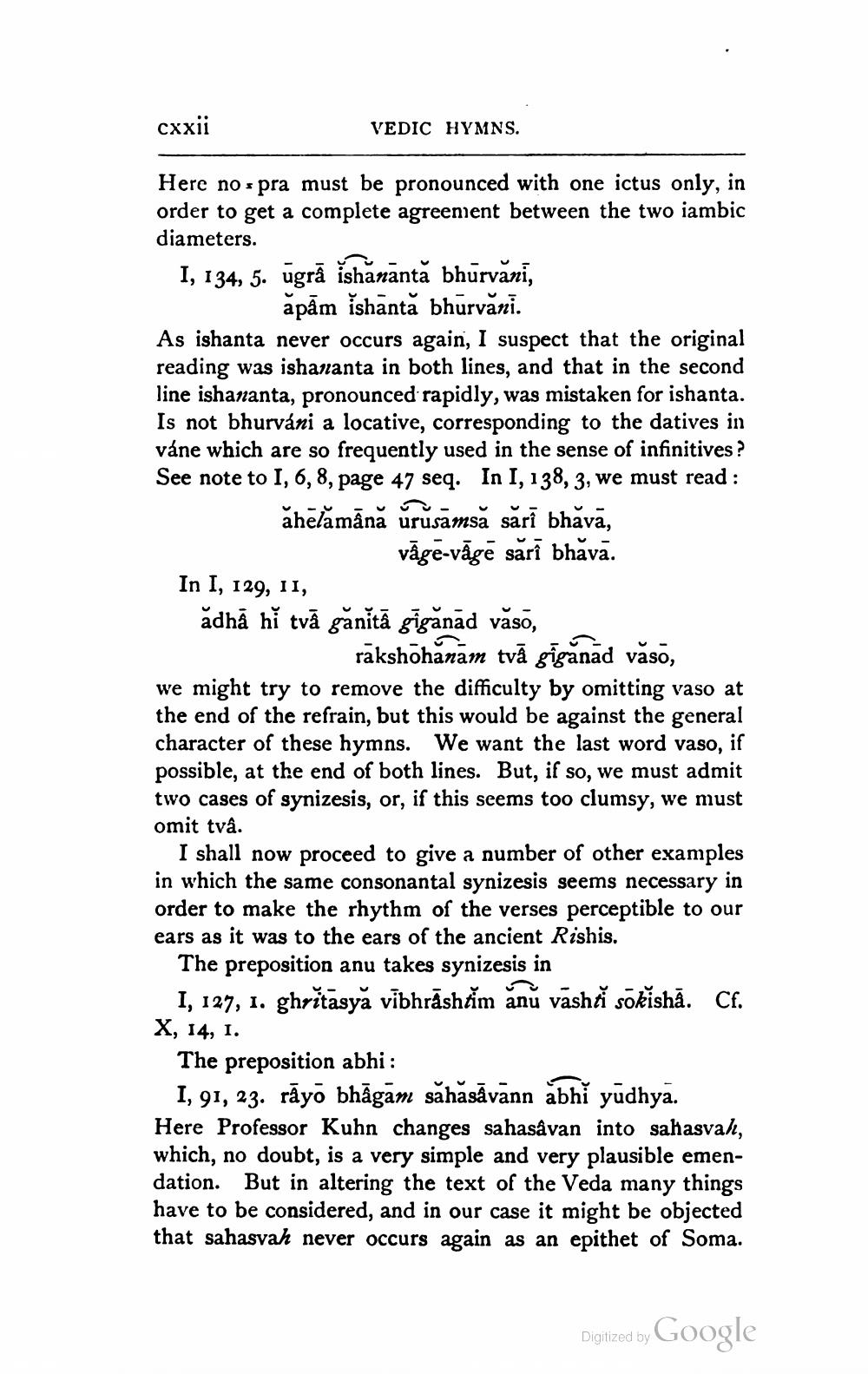________________
cxxii
VEDIC HYMNS.
Here no s pra must be pronounced with one ictus only, in order to get a complete agreement between the two iambic diameters. I, 134, 5. ugrā ishănântă bhurväni,
apām ishanta bhurvani. As ishanta never occurs again, I suspect that the original reading was ishananta in both lines, and that in the second line ishananta, pronounced rapidly, was mistaken for ishanta. Is not bhurváni a locative, corresponding to the datives in váne which are so frequently used in the sense of infinitives? See note to I, 6, 8, page 47 seq. In I, 138, 3, we must read : ähelămână urusamsă sărī bhāvā.
vāge-vāge särī bhăva. In I, 129, 11, adha hỗ tvã ganita giganad vaso,
rakshöhănām tvā gīgånad văso, we might try to remove the difficulty by omitting vaso at the end of the refrain, but this would be against the general character of these hymns. We want the last word vaso, if possible, at the end of both lines. But, if so, we must admit two cases of synizesis, or, if this seems too clumsy, we must omit tva.
I shall now proceed to give a number of other examples in which the same consonantal synizesis seems necessary in order to make the rhythm of the verses perceptible to our ears as it was to the ears of the ancient Rishis.
The preposition anu takes synizesis in I, 127, 1. ghritāsya vibhrāshtim ảnù vashti sokishā. Cf. X, 14, 1.
The preposition abhi :
1, 91, 23. rāyo bhāgam săhăsăvann abhi yudhya. Here Professor Kuhn changes sahasávan into sahasvah, which, no doubt, is a very simple and very plausible emendation. But in altering the text of the Veda many things have to be considered, and in our case it might be objected that sahasvah never occurs again as an epithet of Soma.
Digitized by Google




